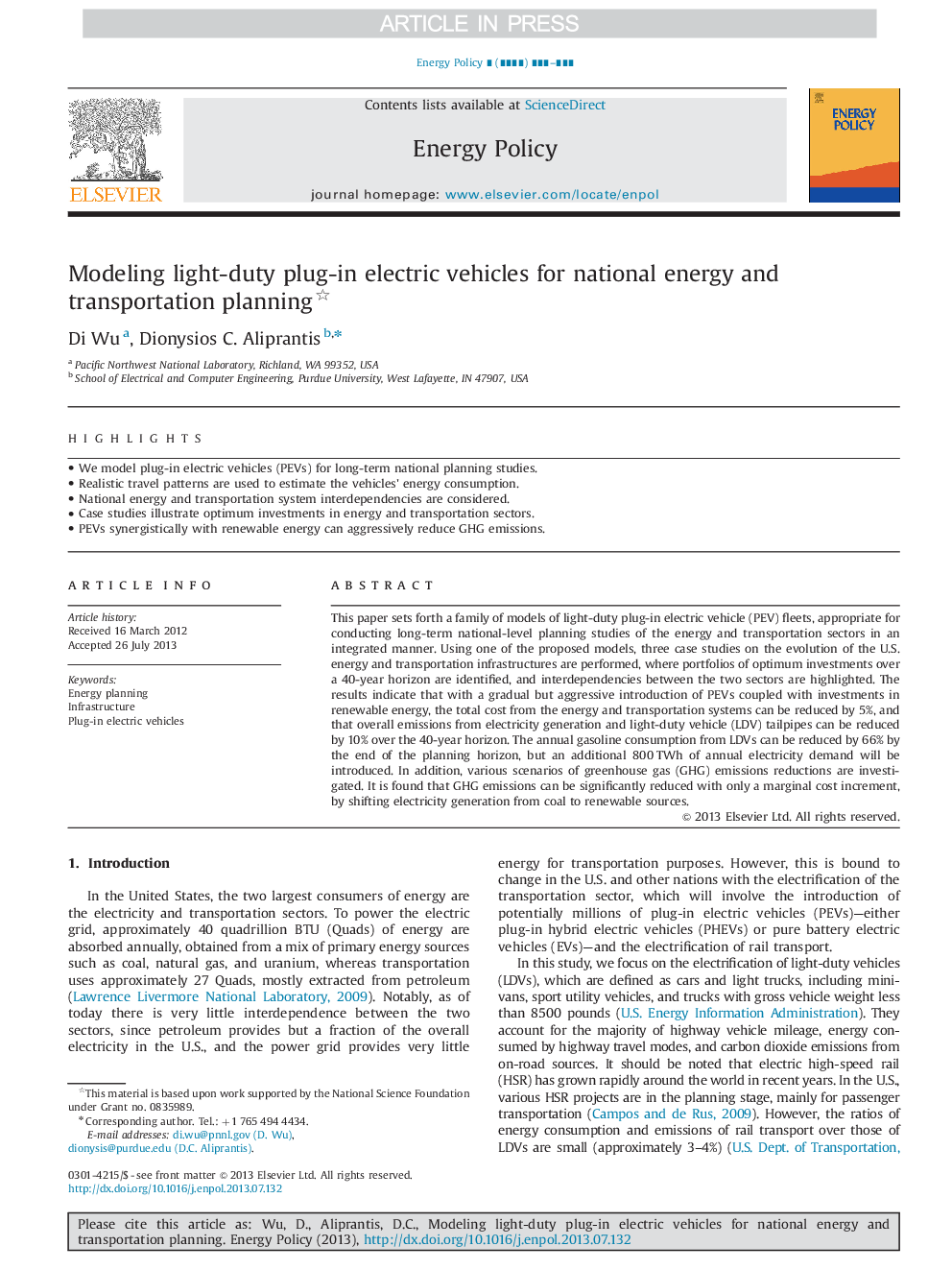| Article ID | Journal | Published Year | Pages | File Type |
|---|---|---|---|---|
| 7403534 | Energy Policy | 2013 | 14 Pages |
Abstract
This paper sets forth a family of models of light-duty plug-in electric vehicle (PEV) fleets, appropriate for conducting long-term national-level planning studies of the energy and transportation sectors in an integrated manner. Using one of the proposed models, three case studies on the evolution of the U.S. energy and transportation infrastructures are performed, where portfolios of optimum investments over a 40-year horizon are identified, and interdependencies between the two sectors are highlighted. The results indicate that with a gradual but aggressive introduction of PEVs coupled with investments in renewable energy, the total cost from the energy and transportation systems can be reduced by 5%, and that overall emissions from electricity generation and light-duty vehicle (LDV) tailpipes can be reduced by 10% over the 40-year horizon. The annual gasoline consumption from LDVs can be reduced by 66% by the end of the planning horizon, but an additional 800Â TWh of annual electricity demand will be introduced. In addition, various scenarios of greenhouse gas (GHG) emissions reductions are investigated. It is found that GHG emissions can be significantly reduced with only a marginal cost increment, by shifting electricity generation from coal to renewable sources.
Related Topics
Physical Sciences and Engineering
Energy
Energy Engineering and Power Technology
Authors
Di Wu, Dionysios C. Aliprantis,
